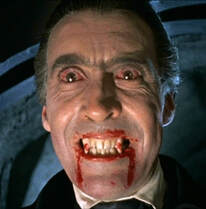
Although Bram Stoker’s novel “Dracula” has been reknowned since it was published in 1897, World Dracula Day wasn’t created until 2012 by the Whitby Dracula Society. The day has been celebrated annually world-wide since then.
Abraham (Bram) Stoker (1847-1912) ▼
◄ Christopher Lee Image Source: https://www.biography. Movie: Horror of Dracula, 1958 com/authors-writers/bram-stoker
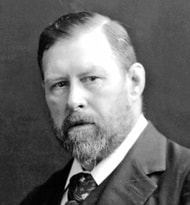
Because “Dracula” is one of the most famous Gothic literary works in the world, and the day celebrates the cultural importance that Bram Stoker’s novel has had over the last century.
Ironically, the author, Bram Stoker ‒ born in Dublin, Ireland ‒ while on vacation in a town named Whitby (North Yorkshire, England), found the name Dracula in the public library and, according to one reference, assumed it means devil in Romanian. The Whitby Dracula Society Facebook page says the novel was inspired by the Gothic architecture of Whitby Abbey combined with Transylvanian folklore.
Image Source: https://www.bing.com/images/ Image Source: https://commons.wikimedia
search?view=detailV&ccid .org/w/index.php?curid=124664624
The novel was well received, although many critics found it too frightening and too risqué. The Inquiriesjournal.com says “Dracula” is not just any “piece of cult-spawning” fiction “but rather a time capsule containing the popular thoughts, ideas, and beliefs of the Victorian era that paints an elaborate picture of what society was like for Bram Stoker’s generation.” http://www.inquiriesjournal.com/
The character Count Dracula has subsequently inspired 43 sequels and thirty different film versions of the story, although Dracula himself rarely appears the same way twice. He has evolved with the society around him. His physical traits, powers and weaknesses have morphed to suit cultural and political climates from the Victorian era to the Cold War. Count Dracula continues to be a work in progress.
The American edition of the original "Dracula" came out in 1899, and it has been translated into nearly every language including Icelandic. However, it was not published in Romania until 1990. That seems a little weird.
Bram Stoker didn’t make a fortune from the novel. When published in 1897, it cost six shillings. Today, a first edition would cost a collector in the neighborhood of $8,000. Stoker didn’t earn any royalties for the first one thousand sales of “Dracula”, but it has never been out of print since it was published. https://nationaltoday.com/world-dracula-day/
COUNT DRACULA ’S CASTLE
While the character Count Dracula was inspired by the real historical figure Vlad III, Prince of Wallachia, the castle that is Dracula’s fictional Transylvania abode, called Bran Castle ‒ BraN Castle not BraM ‒ is located in Romania, tucked away in the Carpathian Mountains near the city of Brasov.
This famous medieval castle sees over 800,000 visitors each year and is a must-visit attraction when visiting this part of the world. It was originally built as a wooden lookout tower in 1212 a.d. when the Teutonic Knights kept an eye on trade routes in the area that were often under threat.
The wooden castle was destroyed by the Mongols in 1242 but was later rebuilt in stone in the 14th century. The first documented records a castle in this location are dated 1377.
King Louis I of Hungary gave permission for Saxon settlers to build this castle with their own funds as a defense against the Ottoman Empire. It later became a prominent strategic fortress and customs post on the mountain pass between Transylvania and Wallachia.
This was around the time that Vlad Tepes was a Prince of Wallachia and many believe that he had a connection with Bran Castle. However, Bram Stoker, the author of Dracula, never set foot in it, and it is merely a rumor that Vlad Tepes visited only once. https://www.npr.org/templatesRomanian
After the Russians took over Romania, the country fell to the Red Army and converted to Communism. Michael I of Romania abdicated the throne, and Princess Ileana and the Romanian royal family were exiled from the country in 1948. Bran Castle then became a museum.
Princess Illeana only returned to Romania in 1990. The family finally was able to take back their legacy in 2005. In 2009, the castle was owned by Archduke Dominic of Austria-Tuscany, but it was recently sold to an architect from New York.
VLAD TEPES, PRINCE OF WALLACHIA ‒ "VLAD THE IMPALER"
The historical namesake of Count Dracula, “was not a vampire, did not drink blood, and didn't worship the devil,” but he was pretty scary without all that. Unfortunately, he did many unthinkable things and probably wracked more misery, discontent, and death than any real vampire might have.
Vlad Tepes (Vlad III) was born in 1431 to a noble family at the point in history when the Christian Holy Roman Empire was fighting with the Muslim Ottoman Empire. Wallachia was caught in the middle. (Wallachia is now a region of Romania named Muntenia). Vlad Tepes’s father, Vlad II Dracul (which references say means ''dragon''), was a member of the secret order of the dragon, created by the emperor of the Holy Roman Empire ‒ although some say it was Vlad Dracul who founded the order.
One theory is that Dracula means ''son of Dracul''. Some references claim the name Dracula is literally translated in Gaelic as Drac Ullah meaning "bad blood", while other subscribe to the original story that it means “devil” in Romanian. Other translations say the “Devil” in Romanian is damerla or daly..
Vlad Tepes lived his adult life in Wallachia, which is not even in Transylvania. There were periods when he was in imprisoned with his younger brother in Pest and Visegrad [in Hungary].
Image Source: https://travelgudier.com/wallachia/
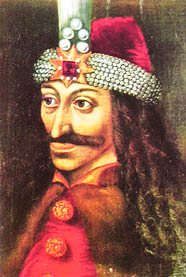
◄ Image Credit: Ambras Castle portrait of Vlad III (c. 1560),
reputedly a copy of an original made during his lifetime
Image Source: https://worldcometomyhome.blogspot.com/vlad-impaler.
WHY “DRACULA” IS IMPORTANT IN LITERATURE
The novel “Dracula” is set in the Victorian era and depicts popular beliefs and values of the strongly conservative times when Stoker penned the novel. The role of women in this society was quite limited, and any topic related to sexuality was verboten. The norm was to encourage an overall chaste and modest lifestyle, and the resistance of inevitable temptation was glorified. Social standards were strict for both men and women, but men enjoyed many more freedoms than females including the role of male superiority. The general idea prevailed that women who failed to resist temptation were possessed by evil, the work of Satanic powers. There was also a fascination with the occult and supernatural.
http://www.inquiriesjournal.com/bram-stokers-dracula
● “Dracula” incorporated many ideas and inferences that challenged Victorian mores, shocked and intrigued readers. It presented ideas that carried the shock factor into the next century.
● The novel’s main influence is that it placed the vampire at the centre of popular culture, in part because of the popularity which resulted in many new versions and new stories, plus films on TV and cinema.
● Although Bram Stoker didn’t invent the vampires or the surrounging myths, he more or less defined the rules and nature of the phenomenon with his own inventions, such as the vampire’s fear of crucifixes, of garlic, of running water, that it has no reflection in mirrors, that it can turn into a bat, that its blood sucking will turn victims into vampires, and several other rules. These are features we still find in modern vampire stories, although the rules are sometimes subverted by, for example, a vampire protagonist being able to overcome the crucifix phobia.
Dracula can't see his own reflection in the mirror because he is a reflection of the culture around him. Ever since Bram Stoker penned Dracula in 1897, the vampire's image has been a work in progress.
● Critics have classified “Dracula” as a genre novel but it falls into so many of their categories – vampire literature, horror fiction, gothic novel, invasion literature, crime, mystery, the supernatural – that categorization is problematic. It is much more than that – a fine novel, dealing with Victorian sexuality, British culture, and more, and, moreover, it is a significant addition to the novel genre in its own right.
● Stoker’s personification of Count Dracula is unique in that he is seen in the story as a person as well as a vampire, with his own looks, character, and motivations. The descriptions ‒ physical, demeanor, emotional ‒ are both chilling and captivating, resulting from Stoker’s excellent attention to telling details.
If you have seen one of the movies or read one of the books, most probably you haven’t read the original book. You should!
JUST SAYIN’
Sources:
https://nationaltoday.com/world-dracula-day/
https://www.npr.org/templates/story/story.php?storyId=11688859
https://www.npr.org/2008/03/21/88416912/in-dracula-a-metaphor-for-faith-and-rebirth
https://thirdeyetraveller.com/visit-draculas-castle-romania-bran-castle/
romaniatourism.com/dracula-legend.html
https://www.history.com/topics/folklore/vampire-history
https://www.livescience.com/24374-vampires-real-history.html
https://www.livescience.com/40843-real-dracula-vlad-the-impaler.html
https://blog.continentalcurrency.ca/vampires-transylvania/
https://hoiabaciu.wixsite.com/project/about?lightbox=dataItem-ji4m2faz2
https://www.atlasobscura.com/places/poenari-castle-vlad-the-impaler
https://mybestplace.com/aroundtheworld/en/hoia-baciu-haunted-forest-of-mystery-in-transylvania/
http://horrorfuel.com/2018/01/15/supernatural-natural-hoia-baciu-forest/
http://www.inquiriesjournal.com/articles/1678/bram-stokers-dracula-a-reflection-and-rebuke-of-victorian-society
https://travelgudier.com/wallachia/
https://www.biography.com/authors-writers/bram-stoker
https://worldcometomyhome.blogspot.com/2017/11/romania-vlad-impaler-1431-147677.html
https://www.insider.com/dracula-movies-tv-shows-actors
https://en.wikipedia.org/wiki/Vlad_the_Impaler
https://study.com/academy/lesson/draculas-influence-on-pop-culture-literature-the-modern-vampire.html
https://atmosphericlights.com/was-dracula-real-separating-fact-from-fiction/
https://myliterature.net/faq/how-is-dracula-important-to-literature/#:~:text=%E2%80%9CDracula%E2%80%9D%20is%20considered%20to%20be%20one%20of%20the,way%20that%20made%20them%20seem%20like%20real%20creatures.
https://www.npr.org/templates/story/story.php?storyId=5434726#:~:text=The%20Romanian%20government%20today%2C%20handed%20back%20the%2014th,prince%20did%20once%20stop%20by%20for%20a%20visit.
https://www.npr.org/2008/10/30/96282132/defining-dracula-a-century-of-vampire-evolution#:~:text=Dracula%20gradually%20became%20the%20most%20significant%20work%20of,all%20that%20was%20threatening%2C%20powerful%2C%20alluring%20and%20evil.
https://atmosphericlights.com/how-stoker-constructed-the-character-of-dracula/#:~:text=Overall%2C%20Bram%20Stoker%E2%80%99s%20description%20of%20Dracula%20is%20both,of%20the%20most%20iconic%20characters%20in%20horror%20literature.
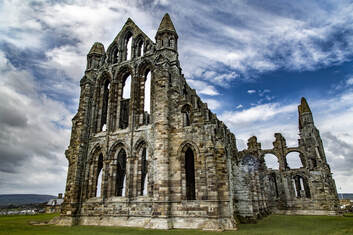
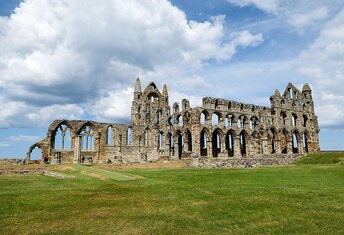
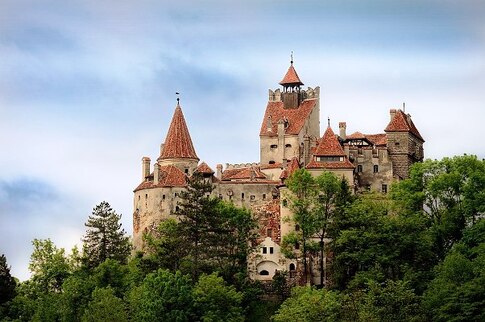
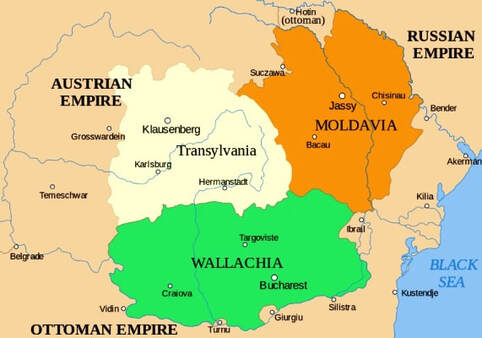
 RSS Feed
RSS Feed